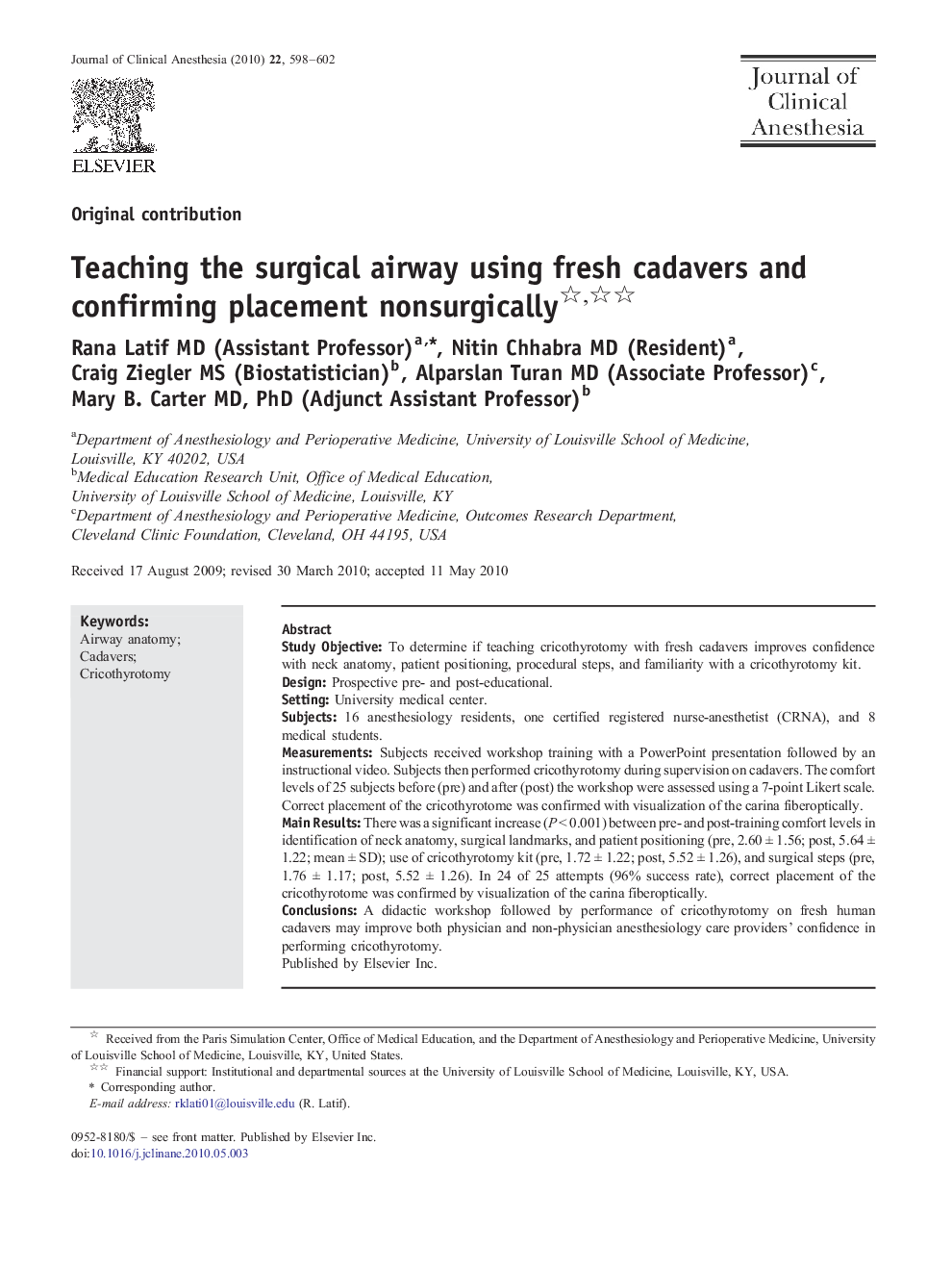| Article ID | Journal | Published Year | Pages | File Type |
|---|---|---|---|---|
| 2763416 | Journal of Clinical Anesthesia | 2010 | 5 Pages |
Study ObjectiveTo determine if teaching cricothyrotomy with fresh cadavers improves confidence with neck anatomy, patient positioning, procedural steps, and familiarity with a cricothyrotomy kit.DesignProspective pre- and post-educational.SettingUniversity medical center.Subjects16 anesthesiology residents, one certified registered nurse-anesthetist (CRNA), and 8 medical students.MeasurementsSubjects received workshop training with a PowerPoint presentation followed by an instructional video. Subjects then performed cricothyrotomy during supervision on cadavers. The comfort levels of 25 subjects before (pre) and after (post) the workshop were assessed using a 7-point Likert scale. Correct placement of the cricothyrotome was confirmed with visualization of the carina fiberoptically.Main ResultsThere was a significant increase (P < 0.001) between pre- and post-training comfort levels in identification of neck anatomy, surgical landmarks, and patient positioning (pre, 2.60 ± 1.56; post, 5.64 ± 1.22; mean ± SD); use of cricothyrotomy kit (pre, 1.72 ± 1.22; post, 5.52 ± 1.26), and surgical steps (pre, 1.76 ± 1.17; post, 5.52 ± 1.26). In 24 of 25 attempts (96% success rate), correct placement of the cricothyrotome was confirmed by visualization of the carina fiberoptically.ConclusionsA didactic workshop followed by performance of cricothyrotomy on fresh human cadavers may improve both physician and non-physician anesthesiology care providers’ confidence in performing cricothyrotomy.
